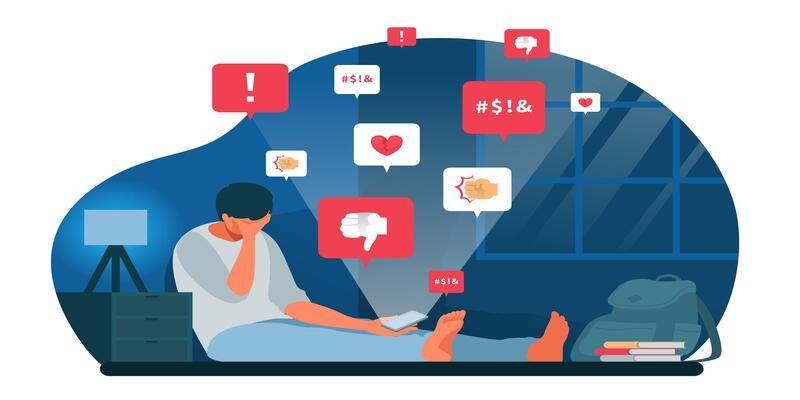Social Media: the harmful modern-day drug

Wherever you are, you’ll find people engrossed in their phones, unaware of the reality around them. Whether eating food at a restaurant or walking on the roads, multitasking with a mobile phone has become the new norm. So much so, that on average, a person spends more than half of their day surfing social media platforms. Back in the day, when I was growing up, mobile phones weren’t common. Half of my childhood was without the technology platforms that rule our lives today. The other half of my childhood was rapidly trying to catch up with the advent of technology and the new age media.
Especially when you talk about human interaction, if you wanted to talk with someone, you had no other option but to physically go out and find them. Spend uninterrupted time with them, giving them your undivided attention. You wouldn’t fear missing out on the information shared by your friends/followers. That closeness during interactions created a different richness with nuances that are now lost as the communication is behind screens. The further we progress in this new age of technological advancement and with the meteoric rise in popularity of documentaries such as The Social Dilemma, the essence of interactions has been lost.
The problem is quite simple – there’s a massive mismatch between the rate of adaptation and advancement between our biology and technology. Because of the law of accelerating returns, the pace of advancement and information technology is exponential. While technology continues to grow at a rapid pace, we’re still trying to figure out how it actually impacts us. Especially, when we are teaching algorithms to predict and modulate our behaviour. Nobody in today’s day and age denies that social media as well as instant messaging is extremely addictive. Its addiction falls right within the symptoms of substance abuse. But what we don’t know yet is how this addiction changes our behaviour over time. Our perception of reality gets altered with over usage of social media.
In the initial stages of the social media experiment, we had more in-person interactions than online interactions. We took our in-person frame of reference and viewed all of our technological interactions through that lens. But now, at a time when we have thousands of friends, acquaintances, celebrities, and online personalities to keep up with on social media, the majority of our interactions have become digital.
Coming back to the main point, how much do we view our in-person interactions through our new digital lens? Data show that our upcoming generations’ digital presence may end up being more important than their in-person interactions. Social media might be one of the most destructive and addictive technologies of the 21st century, but its toxic properties are hidden behind the veil of likes, followers, and perfect profiles. The facts are overwhelming and one can weigh the pros and cons of social media to conclude that there are more negatives than positives.
How can one stop this from happening? To shut it down, does one have to pull the plug on big tech? Honestly, that doesn’t solve much as the truth is that we’ve opened Pandora’s box. The first step in the process is ‘Awareness’ – classical conditioning. If you don’t know what that means, look up Ivan Pavlov’s Dog theory. It is based on non-conscious mechanisms of the brain. If you become conscious of how the conditioning is affecting you, it gives you a degree of control over your behaviour. Beyond that, it’s important to maintain a balance of in-person and digital interaction. You want the lens you view the world from to be a full 100% of human communication, body language, emotion, facial expression, and nuance tonality.
It’s what we were designed to do and we can’t let that practice go. Because that’s what creates our sense of identity and community that gives us a healthy view of others in the world. If we can maintain that balance, we can have a healthy relationship with our online presence and retain control over the influence these platforms and technologies have on us. The algorithms are based on human behaviour and response, and that’s something we can control.
Take small steps. Start by uninstalling some of the social media applications from your phone. By doing so, you’ll have to use the computer to login into the account, this would reduce your screen time. Drop your phone and read an article or two instead, continue reading here. If you’re tied to your phone for work, once the day is done, find some time to spend with your family and friends. Be fully present with the people that you are with and make the most of what life has to offer.






